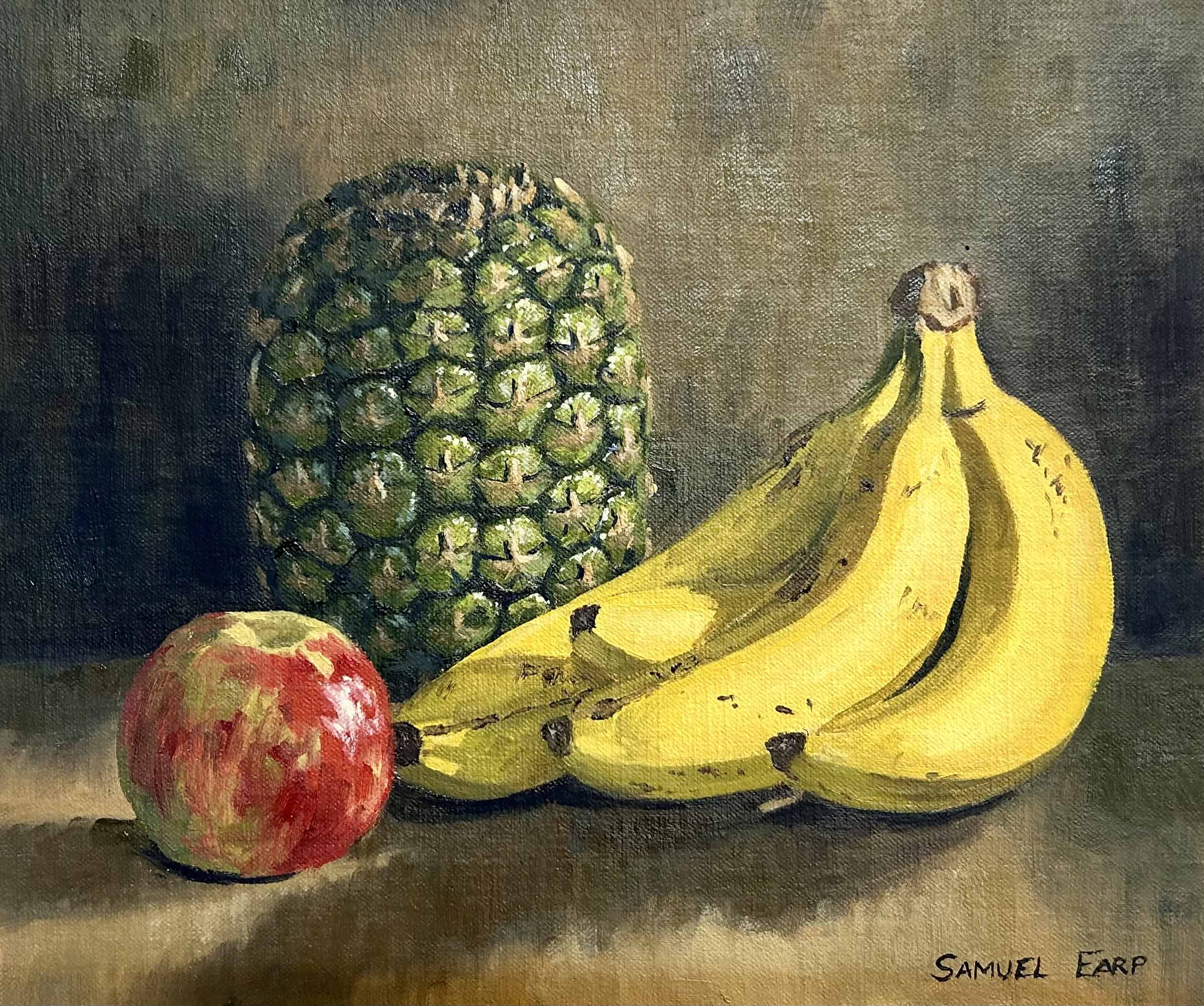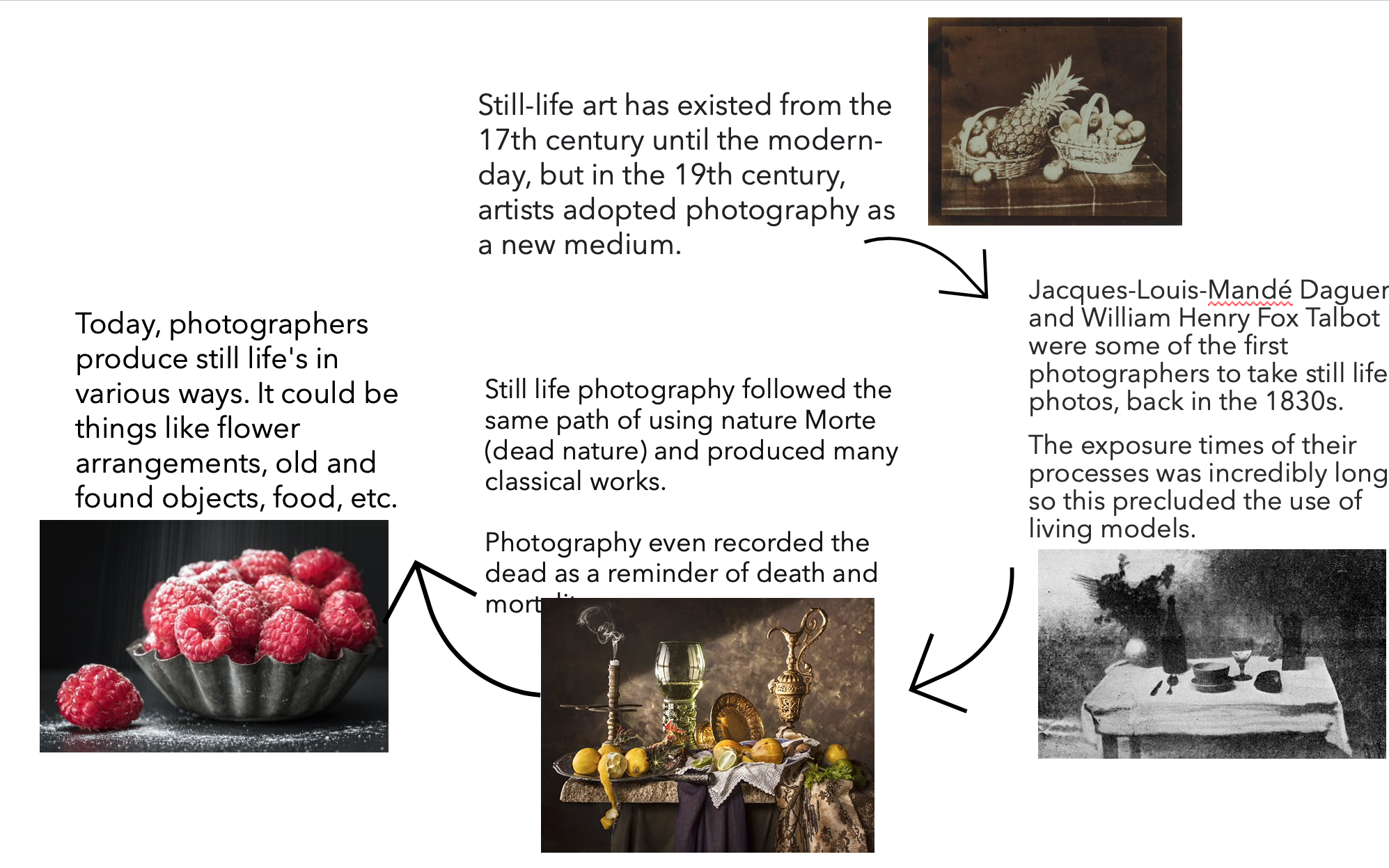- Define what still life is
- Show examples of still life painting and photography
- Include specific artist references and choose one image for analysis using matrix
- Provide a chronological timeline of still life photography
- Then Answer
- What is Vanitas?
- What is Memento Mori?
- What kind of metaphors and symbols are used in still life and why
What is still life?
Still life is a genre of photography that focuses on capturing a group of inanimate objects. These objects can be natural or man-made. They are photographed or painted. Edouard Manet once called still life “the touchstone of painting.”
The term “still life” is derived from the Dutch word stilleven, which became prominent during the 16th century. During this time, still life became recognized as a genre.
Each object symbolizes something, whether that is wealth, poverty, love, etc..
Still life originally began with Netherlandish painting of the 16th and 17th centuries and then developed into a genre of photography.
Examples of still life paintings:

Examples of still life photography:




These images are from photographers:
- Paulette Tavormina
- Laura Letinsky
- Pieter Claesz
- Mat Collishaw
Mat Collishaw:
Mat Collishaws work may appear to be strange, but the real meaning makes the images even more daunting.

Each piece is inspired from prisoners last meals on death row. This makes an eerie atmosphere, not only because of the negative space created by the dark background. There is low light on the images, so it creates dark shadows around the food so you can just about see it with details on the main areas. Even the colour of the food which would normally be vibrant has become dull and appears to look older than it is, reflecting the meaning behind the images. The bag has been torn open to which may reflect the violence behind this prisoners act.
A timeline of still life photography:

What is Vanitas?
the Latin for vanity, in the sense of emptiness or a worthless action.
Vanitas are a form of still life artwork which includes at least 3 symbolic objects. They are designed to remind the viewer of their mortality, death and how worthless of worldly goods are compared to living a moral life. They caution the viewer to be careful about placing too much importance in the pleasures of this life with objects of wealth as they could become an obstacle on the path to salvation and happiness.
Vanitas generally feature:
- Skulls,
- Books,
- Playing cards,
- Maps,
- Wilting flowers,
- Goblets of wine,
- Jewellery,
- Hourglasses,
- Recently extinguished candles.

What is Memento Mori?
a Latin phrase meaning “remember you must die.”
Memento Mori is an artwork formed to remind the viewer of their mortality and of the shortness and fragility of human life. This ties in with Vanitas as they both want the viewer to be aware that expensive objects that show wealth, status and power are worthless and unnecessary in life and shouldn’t be concentrated on in the so little time we have.
This reminder is motivating the viewer to use their limited time wisely.
